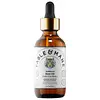What's inside
What's inside
 Key Ingredients
Key Ingredients

 Benefits
Benefits

 Concerns
Concerns

 Ingredients Side-by-side
Ingredients Side-by-side

Water
Skin ConditioningHamamelis Virginiana Water
AstringentGlycerin
HumectantPEG-40 Hydrogenated Castor Oil
EmulsifyingPolysorbate 80
EmulsifyingCarbomer
Emulsion StabilisingGlycine Soja Oil
EmollientAloe Barbadensis Leaf Water
MaskingAnthemis Nobilis Flower Extract
MaskingPanthenol
Skin ConditioningAllantoin
Skin ConditioningLactic Acid
BufferingSalicylic Acid
MaskingCitrus Aurantium Dulcis Peel Oil
MaskingTocopheryl Acetate
AntioxidantCitrus Paradisi Peel Oil
MaskingCucumis Sativus Fruit Extract
EmollientAscorbic Acid
AntioxidantTetrasodium EDTA
Mentha Piperita Oil
MaskingParfum
MaskingPhenoxyethanol
PreservativeCitral
PerfumingLimonene
PerfumingLinalool
PerfumingBenzyl Salicylate
PerfumingCoumarin
PerfumingAlpha-Isomethyl Ionone
PerfumingWater, Hamamelis Virginiana Water, Glycerin, PEG-40 Hydrogenated Castor Oil, Polysorbate 80, Carbomer, Glycine Soja Oil, Aloe Barbadensis Leaf Water, Anthemis Nobilis Flower Extract, Panthenol, Allantoin, Lactic Acid, Salicylic Acid, Citrus Aurantium Dulcis Peel Oil, Tocopheryl Acetate, Citrus Paradisi Peel Oil, Cucumis Sativus Fruit Extract, Ascorbic Acid, Tetrasodium EDTA, Mentha Piperita Oil, Parfum, Phenoxyethanol, Citral, Limonene, Linalool, Benzyl Salicylate, Coumarin, Alpha-Isomethyl Ionone
Caprylic/Capric Triglyceride
MaskingCarthamus Tinctorius Seed Oil
MaskingParfum
MaskingSesamum Indicum Seed Oil
EmollientWithania Somnifera Root Extract
Skin ConditioningPhyllanthus Emblica Fruit Extract
HumectantBacopa Monnieri Leaf Extract
Skin ConditioningEclipta Prostrata Extract
Skin ConditioningSimmondsia Chinensis Seed Oil
EmollientRicinus Communis Seed Oil
MaskingPueraria Lobata Root Extract
HumectantTribulus Terrestris Root Extract
Skin ConditioningStereospermum Suaveolens Root Extract
Skin ConditioningSolanum Xanthocarpum Root Extract
MaskingSolanum Indicum Root Extract
Skin ConditioningPremna Serratifolia Root Extract
Skin ConditioningGlycyrrhiza Glabra Root Extract
BleachingBeta-Sitosterol
Emulsion StabilisingGmelina Arborea Root Extract
Skin ConditioningDesmodium Gangeticum Root Extract
Skin ConditioningAegle Marmelos Root Extract
Skin ConditioningSqualene
EmollientOlea Europaea Fruit Oil
MaskingVitis Vinifera Seed Oil
EmollientTocopherol
AntioxidantPhenoxyethanol
PreservativeBenzyl Salicylate
PerfumingIsoeugenol
PerfumingLinalool
PerfumingCaprylic/Capric Triglyceride, Carthamus Tinctorius Seed Oil, Parfum, Sesamum Indicum Seed Oil, Withania Somnifera Root Extract, Phyllanthus Emblica Fruit Extract, Bacopa Monnieri Leaf Extract, Eclipta Prostrata Extract, Simmondsia Chinensis Seed Oil, Ricinus Communis Seed Oil, Pueraria Lobata Root Extract, Tribulus Terrestris Root Extract, Stereospermum Suaveolens Root Extract, Solanum Xanthocarpum Root Extract, Solanum Indicum Root Extract, Premna Serratifolia Root Extract, Glycyrrhiza Glabra Root Extract, Beta-Sitosterol, Gmelina Arborea Root Extract, Desmodium Gangeticum Root Extract, Aegle Marmelos Root Extract, Squalene, Olea Europaea Fruit Oil, Vitis Vinifera Seed Oil, Tocopherol, Phenoxyethanol, Benzyl Salicylate, Isoeugenol, Linalool
 Reviews
Reviews

Alternatives
Ingredients Explained
These ingredients are found in both products.
Ingredients higher up in an ingredient list are typically present in a larger amount.
Benzyl Salicylate is a solvent and fragrance additive. It is an ester of benzyl alcohol and salicylic acid. This ingredient can be naturally found in some plants and plant extracts.
In fragrances, Benzyl Salicylate may be a solvent or a fragrance component. In synthetic musk scents, it is used as a solvent. For floral fragrances such as lilac and jasmine, it is used as a fragrance component. The natural scent of Benzyl Salicylate is described as "lightly-sweet, slightly balsamic".
While Benzyl Salicylate has been associated with contact dermatitis and allergies, emerging studies show it may not be caused by this ingredient alone.
However, this ingredient is often used with fragrances and other components that may cause allergies. It is still listed as a known allergen in the EU. We recommend speaking with a professional if you have concerns.
Another study from 2021 shows Benzyl Salicylate may have anti-inflammatory properties.
Learn more about Benzyl SalicylateLinalool is a fragrance and helps add scent to products. It's derived from common plants such as cinnamon, mint, citrus, and lavender.
Like Limonene, this ingredient oxidizes when exposed to air. Oxidized linalool can cause allergies and skin sensitivity.
This ingredient has a scent that is floral, spicy tropical, and citrus-like.
Learn more about LinaloolParfum is a catch-all term for an ingredient or more that is used to give a scent to products.
Also called "fragrance", this ingredient can be a blend of hundreds of chemicals or plant oils. This means every product with "fragrance" or "parfum" in the ingredients list is a different mixture.
For instance, Habanolide is a proprietary trade name for a specific aroma chemical. When used as a fragrance ingredient in cosmetics, most aroma chemicals fall under the broad labeling category of “FRAGRANCE” or “PARFUM” according to EU and US regulations.
The term 'parfum' or 'fragrance' is not regulated in many countries. In many cases, it is up to the brand to define this term.
For instance, many brands choose to label themselves as "fragrance-free" because they are not using synthetic fragrances. However, their products may still contain ingredients such as essential oils that are considered a fragrance by INCI standards.
One example is Calendula flower extract. Calendula is an essential oil that still imparts a scent or 'fragrance'.
Depending on the blend, the ingredients in the mixture can cause allergies and sensitivities on the skin. Some ingredients that are known EU allergens include linalool and citronellol.
Parfum can also be used to mask or cover an unpleasant scent.
The bottom line is: not all fragrances/parfum/ingredients are created equally. If you are worried about fragrances, we recommend taking a closer look at an ingredient. And of course, we always recommend speaking with a professional.
Learn more about ParfumPhenoxyethanol is a preservative that has germicide, antimicrobial, and aromatic properties. Studies show that phenoxyethanol can prevent microbial growth. By itself, it has a scent that is similar to that of a rose.
It's often used in formulations along with Caprylyl Glycol to preserve the shelf life of products.